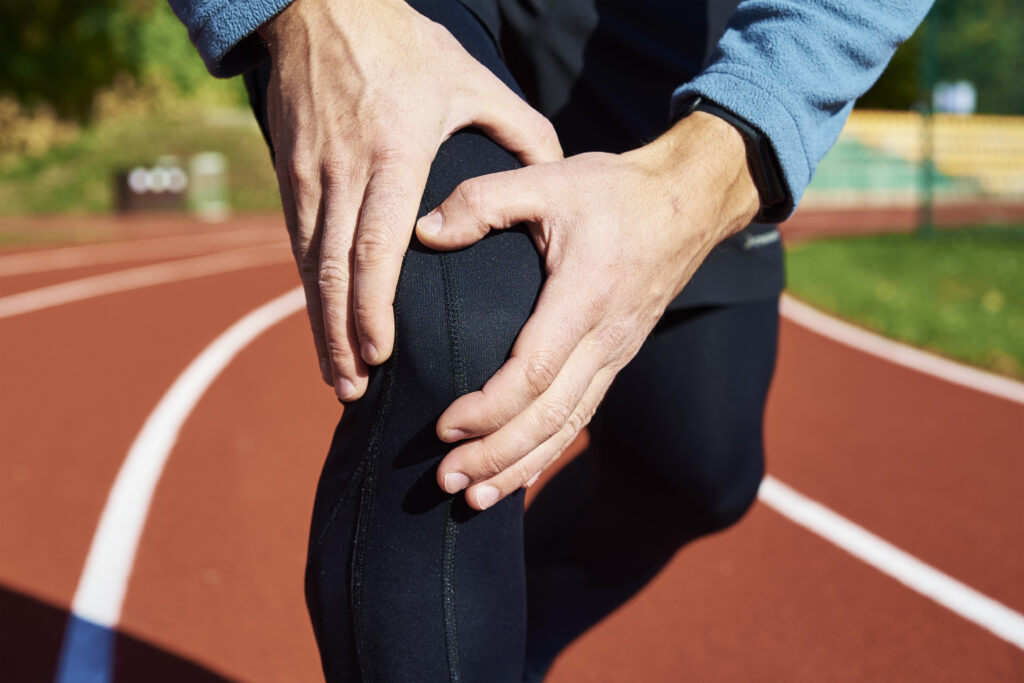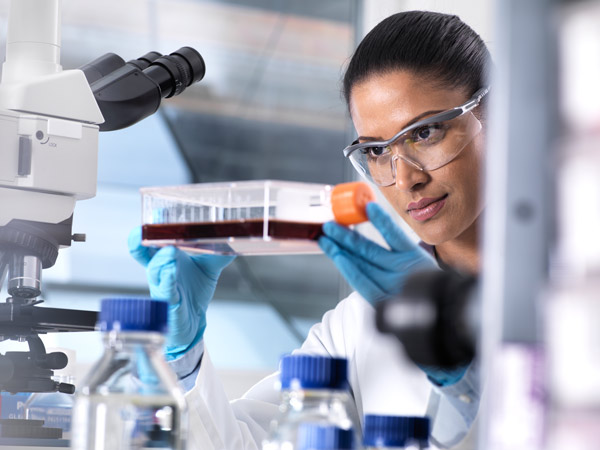Stem cell therapy for injuries can be used by doctors to treat a wide range of sports injuries, including damage to tendons, ligaments, muscles and cartilage.
These injuries may be due to a one-time trauma or chronic overuse.
Doctors and sportspeople use stem cell therapy for injuries that could also include Achilles tendinopathy and torn knee ligaments.

At Stemwell, we combine stem cell therapy for sports injuries with platelet-rich plasma (PRP), another regenerative medicine therapy. Extensive study has revealed that PRP can maximize the potential impacts of stem cells.
PRP is made from a blood sample taken from the patient. Platelets produce growth factors and other proteins into the bloodstream, which:
Experts and physician groups are beginning to acknowledge PRP therapy’s potential to treat chronic tendinopathy.

FASTER, MORE EFFECTIVE HEALING AND RECOVERY
Recovery is the longest and most taxing part of injury. One of the fundamental goals of sports medicine is to get athletes back on the field or court. They need to heal and regain strength before they can play again. Compared to surgery, the healing and recovery period with stem cell treatment for sports injuries is significantly faster. Patients are usually able to resume normal activities within weeks rather than months.
REDUCED INJURY INFLAMMATION TO HELP AVOID FUTURE INFLAMMATION
One of stem cells’ remarkable abilities is their ability to alleviate inflammation. Stem cell therapy not only relieves pain but also lowers joint inflammation quickly.
Improvements can be seen in a matter of weeks with stem cell therapy for sports injuries, and the anti-inflammatory effects have been found to remain for up to two years.
REGENERATION OF INJURED TISSUE
Some sports injuries can cause severe and even permanent damage to the tissue. With the help of stem cell therapy for injuries, damaged tissues can steadily regenerate. According to a study by Dr. Rajabzadeh, adult stem cells have self-renewal capacity and multipotency, making them crucial for tissue regeneration. As a result, stem cells are highly effective for tendon tears and the regeneration of new cartilage, which is critical for sports injuries and recuperation.
Stemwell uses cord tissue-derived mesenchymal stem cells ethically sourced from full-term human umbilical cords (We do not utilize cells from embryos). We then administer more than 300 million cells that are all thoroughly tested for viability before treatment. These cells are NOT a blood product; therefore, it is extremely safe and does not require HLA or phenotypic matching.
Find out if you qualify for our mesenchymal stem cell (MSC) infusion by completing our secure, HIPAA-compliant qualification form
The patient undergoes an initial evaluation and blood work by Stemwell’s doctor.
Endovenous detox therapy applied to patient
Localized stem cell injections in trigger pain points
Hyperbaric Chamber therapy – Hyperbaric oxygen reduces inflammation, oxygenates injured muscle, and regenerates skeletal muscle via macrophage and satellite cell activation.
The fifth step specializes in treating joint injuries through targeted therapies, including shockwave therapy, ultrasound, magnetotherapy, and laser therapy. In certain cases, we may also utilize photobiomodulation for neurological conditions or anti-aging purposes.
*Each Protocol is customized to the patient depending their medical and surgical history
This protocol information is not intended or implied to be a substitute for professional medical advice, diagnosis or treatment. All content, is for general information purposes only.
In one of the largest platelet-rich plasma (PRP) studies, 230 patients with painful tennis elbow (lateral epicondylar tendinopathy) were either treated with PRP injections or with standard therapies. After 24 weeks, approximately 84 per cent of patients who got PRP injections reported a 25 per cent or higher reduction in pain, compared to 68.3 per cent of the control group (p = 0.037).
Mishra AK, Skrepnik NV, Edwards SG, Jones GL, Sampson S, Vermillion DA, Ramsey ML, Karli DC, Rettig AC. Platelet-Rich Plasma Significantly Improves Clinical Outcomes in Patients With Chronic Tennis Elbow: A Double-Blind, Prospective, Multicenter, Controlled Trial of 230 Patients. Am J Sports Med. 2013 Jul 3. [Epub ahead of print] PubMed PMID: 23825183
Another study used PRP or autologous blood injections to treat 99 tendons with chronic tendinopathies. Tennis elbow, jumper’s knee (patellar tendinosis), high hamstring tendinosis, Achilles tendinosis, and plantar fasciitis were all examples of chronic tendinopathies. Patients in the study had symptoms for an average of three years prior to PRP therapy. The majority of patients reported some pain alleviation following therapy, and half of those who got a leukocyte-poor PRP therapy reported being mainly or completely improved.
Harmon K, Drezner J, Rao A. Platelet rich plasma for chronic tendinopathy. Presented at the 2nd International Scientific Tendinopathy Symposium, Vancouver, BC, September 2012. As cited in Colberg RE, Mautner K, Platelet-rich plasma: An option for tendinopathy. Lower Extremity Review Magazine. http://lermagazine.com/article/platelet-rich-plasma-an-option-for-tendinopathy October 2013. Accessed August 18, 2015.
These trials show that, like other treatments for chronic tendon injuries, PRP does not provide complete pain relief for all individuals. PRP therapy, on the other hand, can be utilized as part of a larger treatment plan to alleviate pain and enhance function.
Can’t find an answer? Please contact us.
We are happy to help.
Stem cell therapy for joint injuries is still a relatively new branch of medicine. This means that the treatment is considered experimental and research on the effectiveness of the treatment is still evolving.
So far, studies have shown that stem cell therapy may help to promote the healing of joint injuries. For example, one study found that stem cell transplantation could alleviate joint pain, restore functioning, and minimize trauma in patients with knee damage1. Reviews of clinical studies have also found that stem cell therapy can effectively improve symptoms in tendon disorders and musculoskeletal injuries2 3.
While early results look promising, it should be recognised that the extent of effectiveness varies greatly between studies. Much more high-quality research with carefully designed clinical trials is needed to improve our understanding of the efficacy of stem cell therapy for joint injuries.
The aftercare required of stem cell therapy is much less intense than traditional joint injury treatments such as surgery. Each person is different, so it is important to follow any aftercare instructions as these will be personalized to your needs.
Stem cell therapy for joint injuries is an experimental approach, meaning it is not currently approved by regulatory bodies such as the FDA (U.S. Food and Drug Administration). However, in Colombia, stem cell therapy is legal and we follow strict regulations set by the Secretary of Health. This ensures we maintain the highest standards, following strict laws to prioritize patient safety.
The overall cost of stem cell therapy varies between each person. Once we have an understanding of your unique needs, we will be able to advise on the total fees.
If you are struggling with joint pain and are looking for a convenient, cutting-edge treatment, stem cell therapy may be a good option for you. Stem cell therapy may be able to significantly improve your quality of life without the need for invasive surgery.
We will also be sure to let you know if you may not be a good candidate for stem cell therapy, for example, if your condition is too severe or you have other health needs.